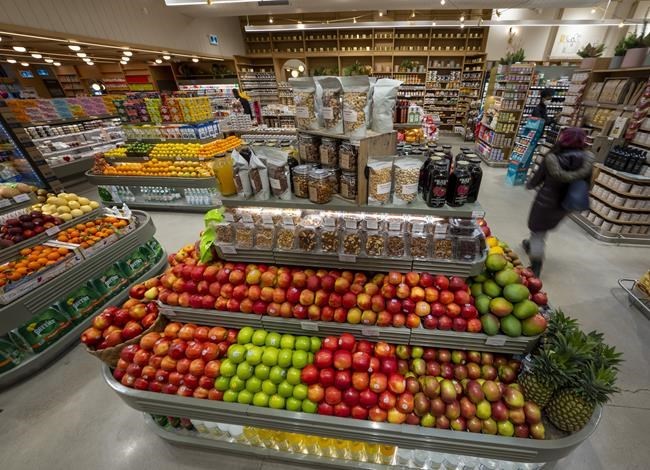Food prices in Canada are soaring as higher input costs, shipping fees and wages push the food inflation rate to 6.5 per cent — the biggest year-over-year jump in grocery bills in more than a decade.
Statistics Canada said Wednesday the increase in food prices in January outpaced the overall annual inflation rate of 5.1 per cent.
Meat, bread and fruit were just some of the food items pushing up the cost of groceries, the agency said.
Higher food prices reflect a raft of issues, including the rising cost of goods, labour shortages and supply chain disruptions, experts say.
"It's layer upon layer of issues that are compounding to create these skyrocketing prices," said Simon Somogyi, University of Guelph professor and Arrell Chair in the Business of Food.
"The cost of everything across the food supply chain is getting so expensive and that's the same for farms, wholesalers, packers and processors right up to retailers. All these things are coming together on top of other issues like winter storms and shipping delays and the result is higher prices."
Canadians paid 7.4 per cent more for bakery products in January compared with a year ago, an extra 16.5 per cent for margarine and 12.1 per cent more for condiments, spices and vinegars, Statistics Canada said.
Supply chain disruptions and unfavourable growing conditions also pushed fresh fruit prices up 8.2 per cent, the agency said.
Meanwhile, the price of beef jumped a whopping 13 per cent while chicken was up nine per cent and fish increased 7.9 per cent.
"We're starting to see commodity price increases ripple through to the grocery store," said Stuart Smyth, associate professor and research chair in Agri-Food Innovation at the University of Saskatchewan.
"We'll see those higher beef prices continually for the next several months."
Alcohol prices are on the rise as well.
Retail store prices for beer rose 4.7 per cent year-over-year, while wine prices were up 1.9 per cent owing to higher shipping and material costs for things like corks, bottles and cans.
Higher prices may prompt some Canadians to change their regular grocery purchases in a bid to save money.
Experts say some shoppers will opt for conventional fruits and vegetables rather than pricier organic options. Others might be inclined to buy a grocery store brand rather than a name brand product.
Consumers can also make a grocery list before heading to the store — and stick to it — to avoid impulse purchases, use grocery store flyers to bargain hunt, consider more affordable plant-based alternative products and buy frozen fruit and vegetables rather than fresh.
"Frozen berries, peas, corns and other types of vegetables are a lot cheaper," Somogyi said. "They may not taste as good but they're a lot lower in price."
This report by The Canadian Press was first published Feb. 16, 2022.
Brett Bundale, The Canadian Press



